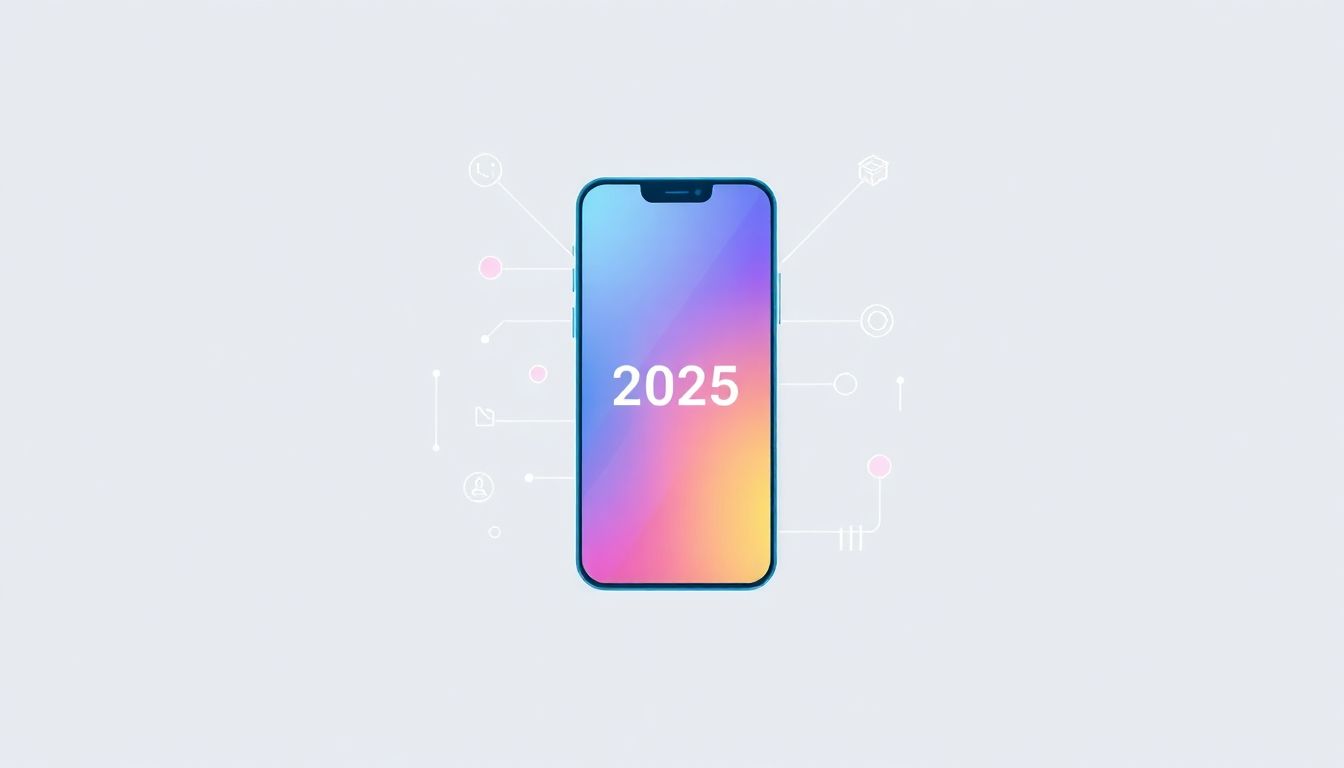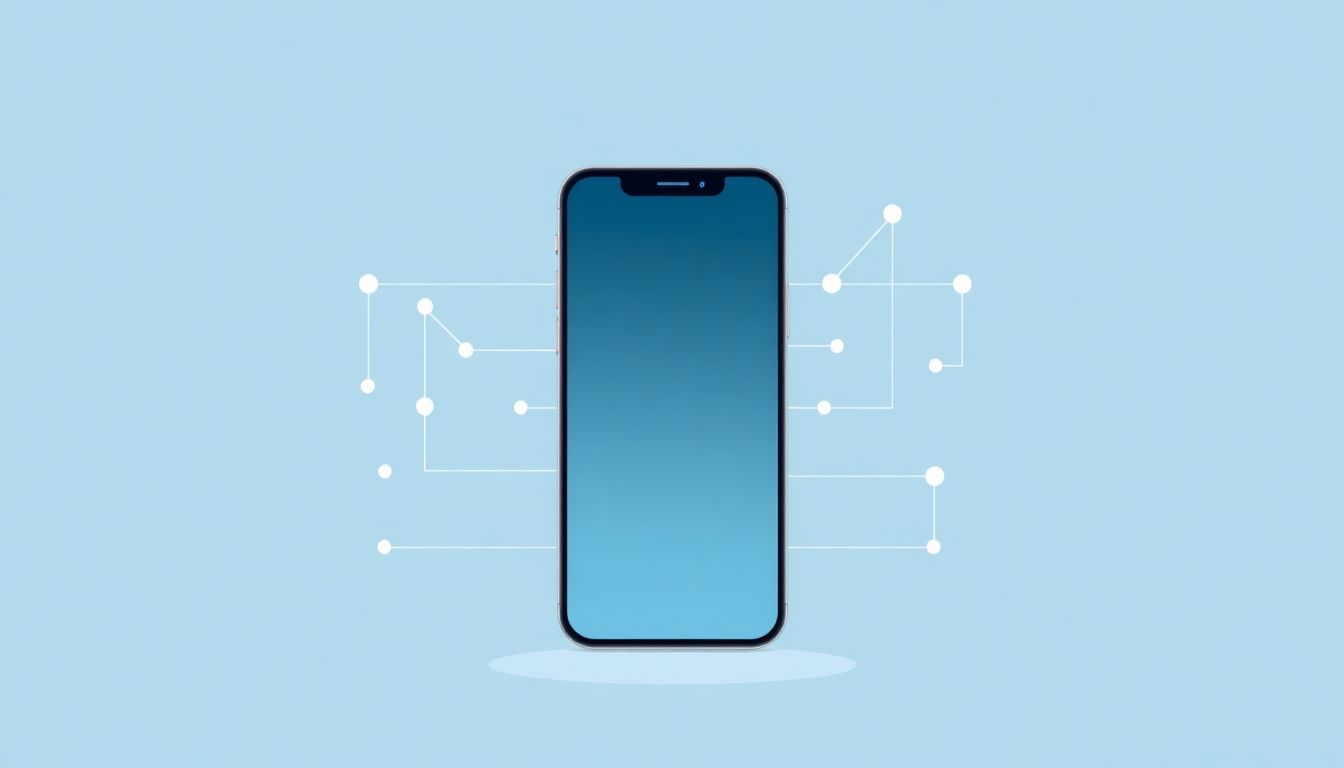Hey there! If you’re curious about how AI is changing mobile apps in 2025, you’re not alone. Lots of people wonder how these smart tech tools can make our phones smarter and more fun to use. Sometimes, keeping up with all the changes feels tricky, right?
But don’t worry—if you keep reading, I’ll show you some cool ways AI is helping us and developers create better apps faster. We’ll talk about tools that make building apps easier, ways to make your experience super personalized, and what’s coming next for mobile tech.
In the end, you’ll get a clear picture of how AI is shaping the future of mobile apps and what you can do to stay ahead of the curve.
Key Takeaways
Key Takeaways
- AI is now standard in mobile apps in 2025, making them more personalized, smarter, and easier to use. Features like chatbots, recommendations, and voice assistants improve user engagement and retention.
- Building AI-powered features is simpler thanks to tools like APIs, SDKs, and frameworks from companies like OpenAI, Google, and IBM. These tools help developers add advanced functions without needing deep machine learning skills.
- Predictive analytics allows apps to analyze user data and deliver highly tailored experiences, boosting user satisfaction and helping to identify valuable or at-risk users.
- Connecting AI across different parts of the mobile ecosystem ensures a smooth, integrated experience. Using APIs and modular design helps apps stay current and adaptable to new AI features.
- Preparing mobile apps for future AI growth involves collecting quality data, choosing flexible tools, designing scalable architecture, and staying updated on trends. This approach keeps apps relevant and capable of incorporating new AI capabilities over time.

1. How AI Enhances Mobile Apps in 2025
AI in mobile apps is no longer a future concept — it’s here and making a real difference today. In 2025, AI-powered features are standard for many apps, boosting user engagement and personalization. Think about AI chatbots that handle customer service seamlessly or image recognition features that tag your photos instantly.
Highlights include AI-driven recommendations, smarter voice assistants, and predictive typing that learns your habits over time. This makes apps more intuitive, responsive, and tailored to individual users. Companies like Google and Apple turn to frameworks like TensorFlow Lite or Core ML to embed AI directly into their apps, which helps deliver smooth offline experiences.
With AI, mobile apps are now better at understanding user intent, which directly translates into higher retention and growth. In 2024, the AI app market hit $21.23 billion and is projected to reach $354 billion by 2034 — showing just how impactful AI integration is becoming.
2. AI Tools That Simplify Mobile App Development in 2025
Developing mobile apps with AI is easier than ever thanks to dedicated tools that automate key parts of the process. Platforms like Microsoft’s Azure AI, Google’s Vertex AI, and open-source frameworks like PyTorch simplify building intelligent features.
Want to add a chatbot? Tools like OpenAI’s API make integration straightforward, with pre-trained models ready to deploy. For image and speech recognition, SDKs from providers like Clarifai or IBM Watson can be plugged into your app in just a few clicks.
Here are some actionable tips to leverage these tools:
- Start with a clear goal — do you want AI to personalize content or automate customer support?
- Use ready-made APIs when possible — this saves development time and reduces errors.
- Test AI features thoroughly on multiple devices, especially offline, to ensure smooth performance.
- Stay updated with new SDKs and frameworks that continually improve developer experience and AI capabilities.
By using these tools, you can add advanced features without requiring deep expertise in machine learning, making AI a standard part of your mobile app toolkit in 2025.
3. Using Predictive Analytics to Personalize Mobile Experiences
Predictive analytics is the secret weapon behind highly personalized mobile apps today. It involves analyzing user data in real-time to forecast future behaviors and preferences. This helps apps present content, offers, or features tailored specifically to each user.
For example, a fitness app can suggest workout plans based on your recent activity, while a shopping app can recommend products you’re likely to buy next. This increases engagement and boosts conversion rates. AI models trained on large datasets, like those from companies such as Salesforce or Adobe, enable this level of personalization effortlessly.
To harness predictive analytics:
- Gather clean and relevant user data, including past interactions, location, and device usage.
- Use AI platforms like [Google Vertex AI](cloud.google.com) or [Microsoft Azure ML](azure.microsoft.com) to build or deploy prediction models.
- Continuously monitor model accuracy and update data feeds to keep personalization relevant.
- Apply these insights to tweak user interfaces and content dynamically, creating a feeling that the app “knows” the user.
As a bonus, predictive analytics can help identify high-value users or potential churners, allowing you to tailor retention strategies and keep your app users happy longer.

4. Connecting AI Inside the Mobile Ecosystem
Integrating AI into the entire mobile ecosystem is key to delivering a smooth, interconnected user experience.
Think of it like making all the parts of your app talk to each other efficiently—to avoid silos and ensure data flows seamlessly.
One way to do this is by using APIs that let different AI services communicate, such as integrating voice recognition with chatbots or personalized recommendations.
For example, Google’s **Android** and Apple’s **iOS** both now support frameworks that allow for easy AI integration across apps and devices.
To get started, consider designing your app architecture with modular AI components that can be updated independently, like adding new features without massive overhauls.
This approach not only saves time but helps future-proof your app for the rapid advances in AI tech, making sure the user experience stays fresh.
Another tip: collaborate with cloud providers like **AWS**, **Azure**, or **Google Cloud** to host and manage AI models centrally, giving your apps access to powerful AI tools without hefty self-hosting costs.
Connecting AI within your mobile ecosystem isn’t just about individual features; it’s about creating a unified environment where all parts work together for smarter, more responsive apps.
5. Preparing Your Mobile Apps for the Future with AI
If you want your mobile app to stay relevant in 2025 and beyond, preparing it for AI integration now is a smart move.
First, start with collecting high-quality, relevant user data while respecting privacy laws—think of data as the fuel for your AI models.
Next, choose flexible AI tools and frameworks, like **TensorFlow Lite** or **Core ML**, that can grow with your app’s needs.
It’s also worth building your app architecture with future integrations in mind—modular, scalable, and easy to update.
Don’t forget to train your teams or collaborate with AI specialists so they understand how to maintain and improve AI features over time.
Using AI-powered testing tools can help automate quality assurance, catching potential issues early—this keeps the user experience smooth as your AI features evolve.
Remember, staying up-to-date with industry trends like the rapid growth of AI app revenue (expected to hit nearly $157 billion by 2030[1]) and regional market shifts—like APAC’s dominant 55.34% share of AI app revenue in 2024—helps you make smarter development decisions.
By planning ahead and adopting a proactive mindset, your apps will be ready to adapt, incorporate new AI capabilities, and meet user expectations for years to come.
FAQs
AI will enable mobile apps to offer smarter features, better personalization, and more efficient performance, creating a more engaging experience for users and providing developers with powerful tools for innovation.
Tools like automated code generation, AI-driven testing, and voice command integrations are streamlining development processes and enabling faster, more responsive app creation.
Predictive analytics analyze user data to anticipate preferences, allowing apps to deliver tailored content, recommendations, and notifications that improve user engagement.
AI connects with mobile infrastructure through APIs, cloud services, and embedded hardware, enabling features like voice assistants, real-time analytics, and adaptive interfaces within apps.